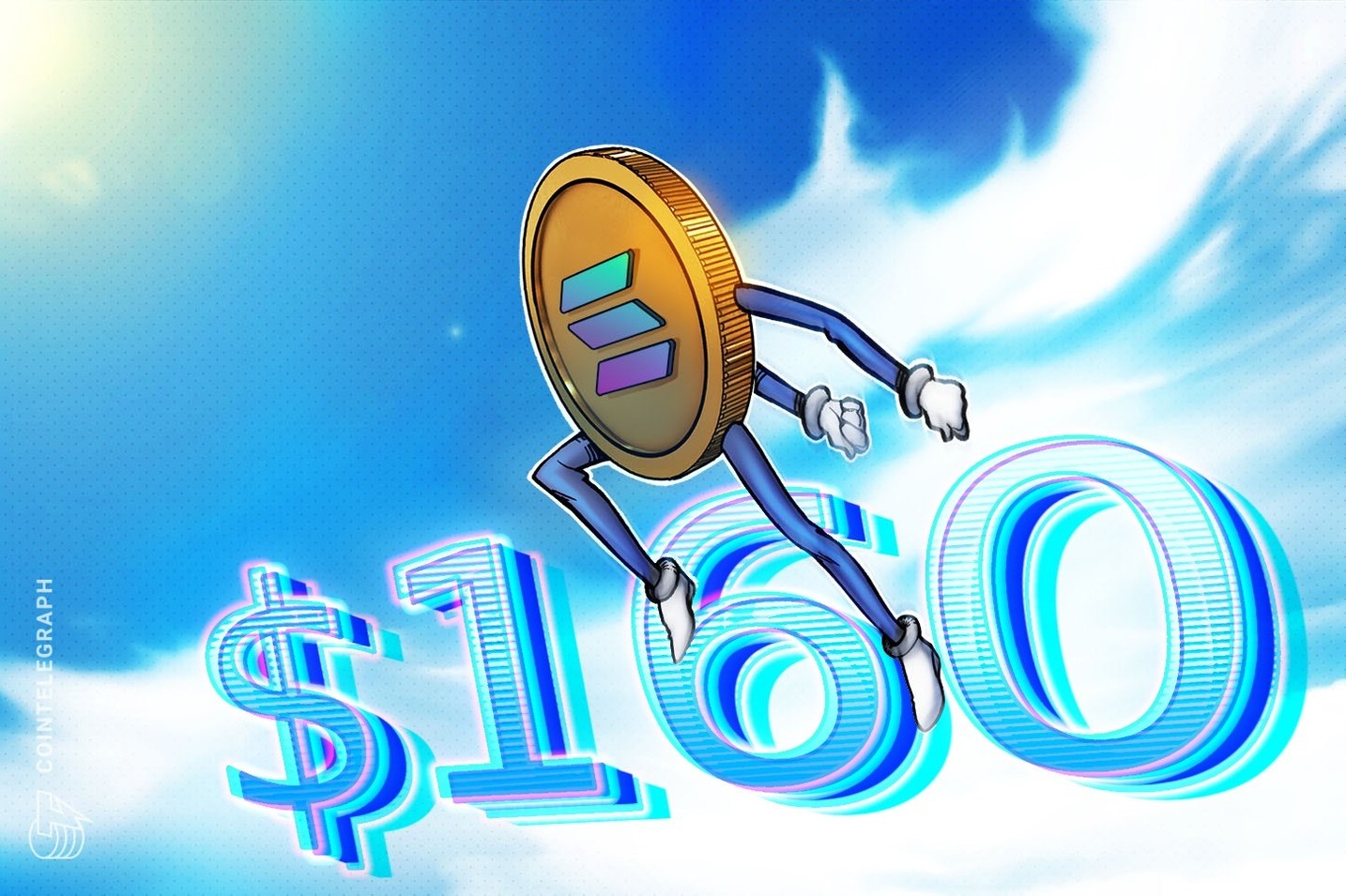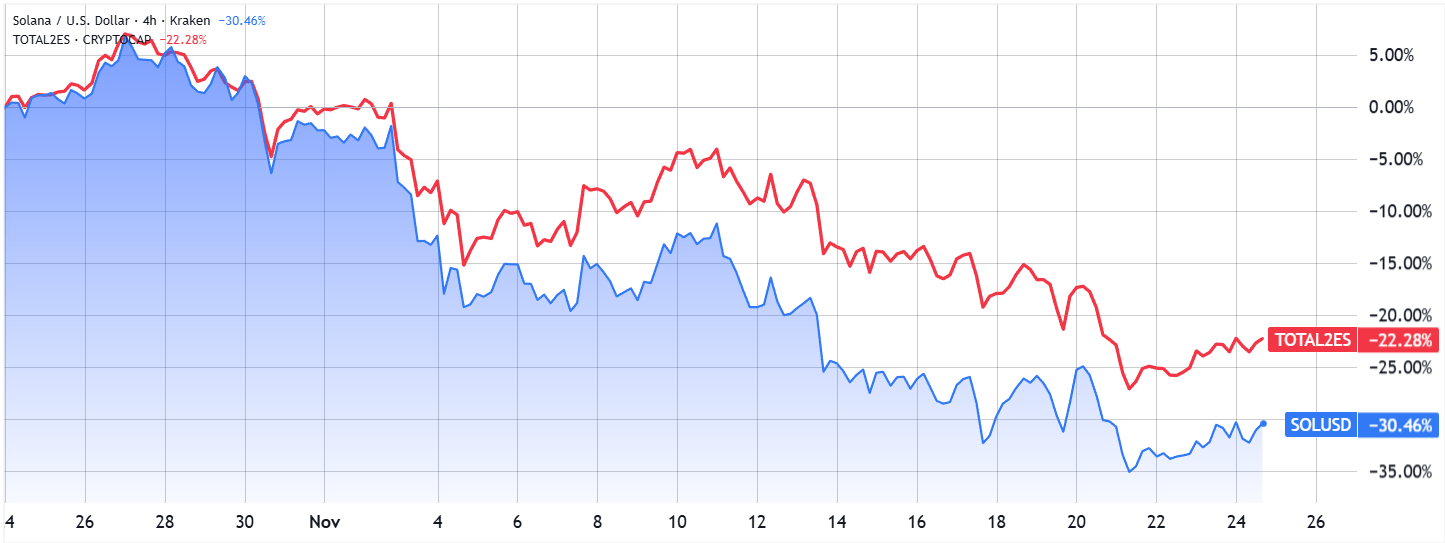
Key Highlights
- Solana has seen a growth in activity; however, this has not compensated for the drop in leveraged demand and stagnant network fees, limiting SOL’s short-term bullish outlook.
- A short squeeze to reach $160 would necessitate a more robust support from derivatives and enhanced investor confidence amid ongoing macroeconomic uncertainty.
SOL, the native token of Solana, struggled to regain the $140 mark on Monday, having only partially recovered its recent losses. Negative funding rates in SOL perpetual futures along with waning on-chain activity in the Solana ecosystem continued to dampen investor sentiment.
Despite a 30% drop over the last 30 days, resulting in underperformance relative to the wider altcoin market, traders are currently assessing the sustainability of any upward trend in the near future.
 SOL/USD versus the altcoin market cap. Source: TradingView / Cointelegraph
SOL/USD versus the altcoin market cap. Source: TradingView / Cointelegraph
A significant portion of investor unease stems from diminishing confidence in the US economy, spurred by labor market weaknesses and a growing inclination towards AI investments.
The CEO of Deutsche Bank’s DWS asset management division stated to Reuters that there is “no playbook” for assessing the AI sector and emphasized that more evidence beyond mere efficiency gains is necessary to support high valuations.
Following an unprecedented 43-day shutdown of the US government, numerous consumer firms revised their sales forecasts downward due to weaker-than-expected earnings — notable examples include Target, Home Depot, and McDonald’s.
With the anticipated October Consumer Price Index (CPI) and unemployment metrics release canceled, traders find themselves with diminished visibility regarding the Federal Reserve’s monetary policy decisions, scheduled for December 10.
Weakness in Derivatives and Fading Activity Continue to Impact SOL’s Value
SOL’s recent struggles reflect a wider downtrend in risk tolerance, with additional factors likely contributing to its weaker placement against more prominent altcoins. The successful US launch of exchange-traded funds (ETFs) for XRP has sparked increased competition for institutional flows, with launches for other cryptocurrencies like Litecoin and Chainlink expected to follow.
Demand for bearish leverage on SOL futures has remained firm since Friday, indicated by the negative funding rate, which shows that traders are paying to hold positions anticipating further price declines.
The interest in SOL futures has dipped 27% over the past month, indicating reduced leverage demand.
The premium on SOL’s monthly futures has plummeted to 0%, a value indicative of very bearish market conditions. Under neutral circumstances, this level would typically fall between 5% and 10%, with negative figures indicating a glaring lack of demand for bullish opportunities.
Bearish sentiment is expected to linger until there are marked improvements within the SOL derivatives markets.
Over the past month, the total value locked (TVL) in the Solana network fell to $10.5 billion, a 20% decline from the previous month. Weekly blockchain revenue has also dwindled to its lowest point since May, further explaining SOL’s lagging performance compared to the wider altcoin market. In contrast, Ethereum’s weekly fees declined merely by 5% in the same timeframe.
The Solana network has maintained a significant lead in daily active addresses and transaction counts, with a notable 13% rise in activity, whereas Ethereum has recorded a 15% drop. Though these figures might bolster confidence among SOL investors, they do not independently catalyze a sustained bullish rally.
SOL has climbed 14% since reaching a low of $121.50 last Friday; however, this rebound does not assure prolonged upward momentum, particularly given the current fragility of the derivatives markets and weak network fees. A push towards $160 remains a possibility but relies heavily on demonstrably stronger confidence from SOL traders.



